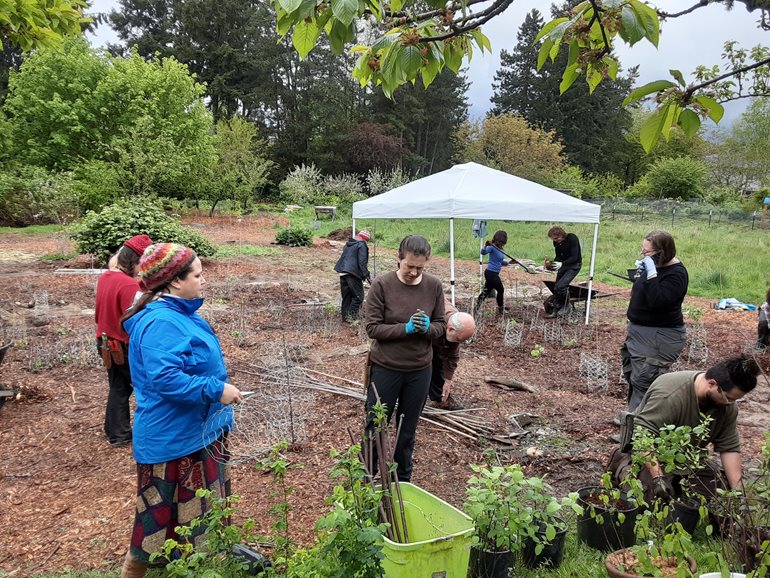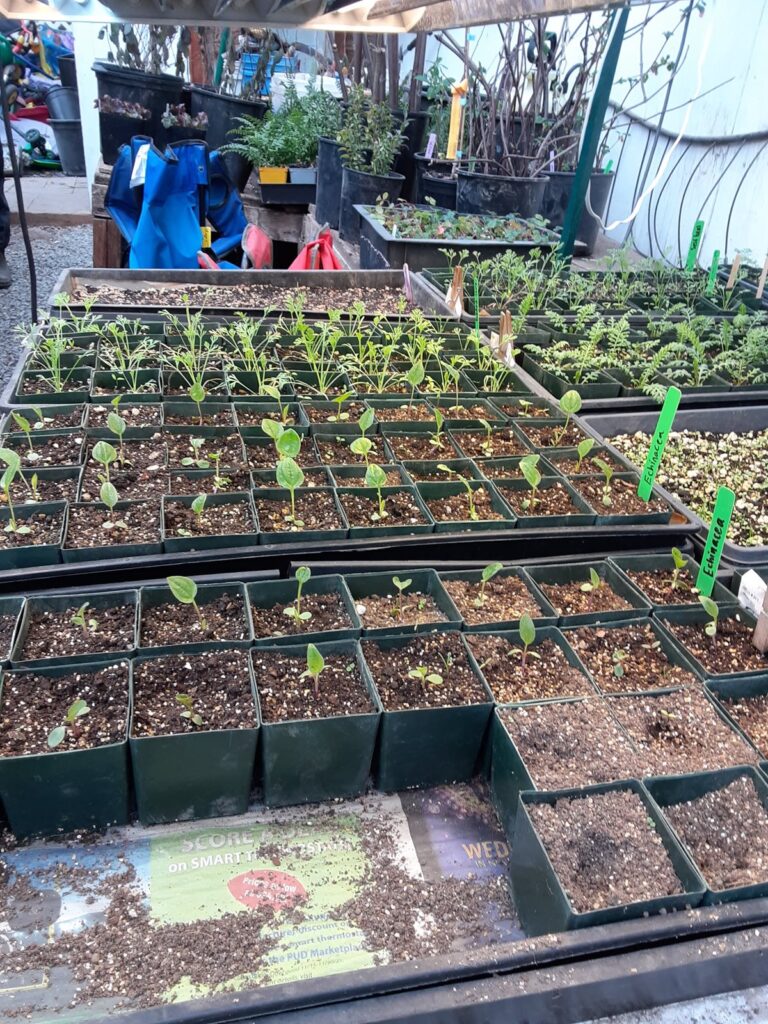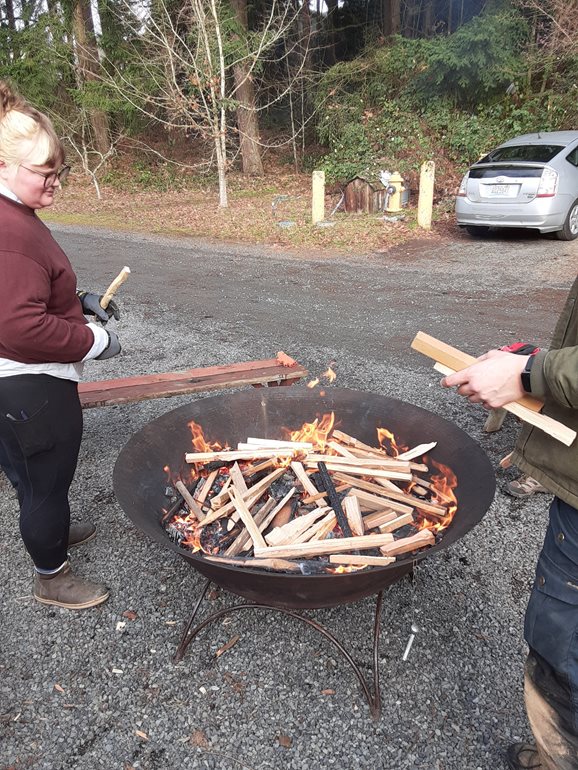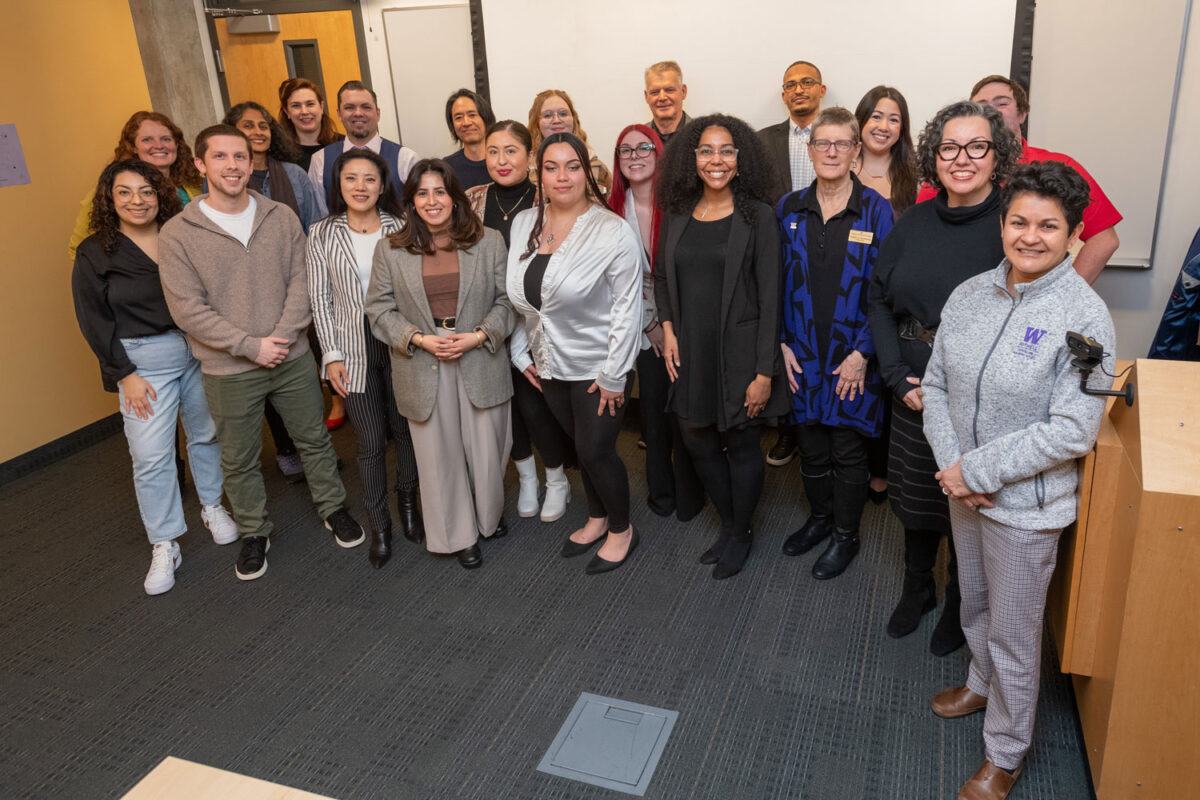For many decades now, people in the United States have increasingly valued convenience. With fast food restaurants and meal delivery services becoming the norm these days, it’s hard to imagine a lifestyle that includes gathering food from the earth — planting crops and waiting months for them to grow into ingredients to make meals. Most people at grocery stores stock their carts with packaged items from a shelf, not even thinking about where they came from originally.
This disconnect between people and food points to a greater issue: the separation between people and the earth.

Meanwhile, studies show that humans stand to benefit tremendously from nurturing a strong relationship with the natural world: Over time, people who are more connected with nature are happier, feel more vital and have more meaning in their lives.
There are people who approach life this way, reports University of Washington Bothell alumna Anita Higgins — including those who live at Songaia, a cluster of properties located in Bothell, Washington, where she also resides. The people in this intentional community chose to live a more sustainable lifestyle, sharing resources such as child care and cars. Meals are prepared and enjoyed together, and the majority of their summer produce comes from a shared garden.
“Songaia was first imagined more than 25 years ago,” Higgins said, “and today, it is a strong, established community of 50 people sharing and stewarding more than 12 acres of land on five contiguous properties.”
From birthday candles to planting trees
Higgins works at Songaia as the community’s garden steward, which includes oversight of the Native Forest Garden, an experimental bio-cultural restoration project on the ancestral lands of the Coast Salish tribes. The creation of this forest was, in part, a gift to one of Songaia’s members, Patricia Newkirk, who wished it into existence on her 70th birthday.
“She wanted to do something that she had never done before,” Higgins said, “and that was to plant a native forest.”
Songaia had a large meadow covered with grass that was giving way to blackberry bushes, and Newkirk had the idea of transforming it into a Miyawaki forest.
“Akira Miyawaki was a Japanese botanist and an expert in plant ecology who specialized in seeds and natural forests,” Higgins explained. “He was active worldwide as a specialist in natural vegetation restoration of degraded land.”
Focus on diversity and density
As Higgins explains, “The Miyawaki Method of restoration recognizes that focusing on the diversity and density of native plant species aboveground creates the conditions below ground for relationships to emerge more quickly. The relationships between the plants and the web of life in the soil — fungi, bacteria and invertebrates — create the foundation for a resilient forest.”

One central aspect to the project was the Songaia community’s intention to re-introduce plants of cultural significance to local Indigenous communities. Among the collaboration partners were Linzie Crofoot, an Indigenous educator at the NW Indian College, a Tlingit and Haida Tribes Center Council member, and a Colville-Okanagan descendant; as well as Tayna Greene, then one of Crofoot’s undergraduate students and colleague at the Nakani Native Program in Seattle; a Tulalip Tribal community member; and a Snohomish, Sauk-Suiattle, Duwamish, Snoqualmie and Colville-Wenatchi descendant.
“Linzie and Tayna taught us that ecological restoration is incomplete without collaboration with those Native communities who stewarded this land since time immemorial, before European colonization,” Higgins said. “They also taught us that the native plants endured the same harms as the native humans, losing their land, breaking up communities and even losing their names.
“Giving plants their traditional Lushootseed names back became a goal of the project.”
Building reciprocal relationships
In her time studying ecological restoration at UW Bothell, Higgins observed a pattern that would influenced her ways of thinking about the Native Forest Garden.
“Restoration projects that had the most success — where diversity, function and resilience were all enhanced and maintained over time — were the projects in which a community of humans had developed a relationship with the site,” she said.
“I observed this in places like the North Creek Wetland at UW Bothell, where the communities of students, faculty and groundskeepers participate in stewardship. The success of that 50-acre wetland restoration project hinges upon the continued care, resource allocation and experimentation done by the surrounding community.
“For ecological restoration to be successful, I began to understand that what we really need to restore is human relationship to land.”
Not only did Higgins rely, in part, on her knowledge from UW Bothell to guide this project, but she also relied on her former instructor, Dr. Amy Lambert, associate teaching professor in the School of Interdisciplinary Arts & Sciences, and students from Lambert’s Undergraduate Research in Environmental Science course. In winter quarter 2022, students Matt Dulski, Reese Mack, Kyle Quach and Sierra Rudnick worked on the former meadow.
Of chickens and biochar
These UW Bothell students aided in preparing the land by digging out the blackberries and turning over giant clods of grass. In the process, they experimented with a variety of different methods — including live chickens.

Working alongside Songaia’s community members, the students helped create a 10’x10’ pen where the chickens could work the soil for several days. “We ran into some issues with this method,” Rudnick said. “For starters, the chickens kept escaping! Then they started laying eggs in the pen, too.”
So the team pivoted and began to deal with the grass issue using with a broadfork, turning nearly all the grass in more than half an acre by hand.
They then began experimenting with biochar, a black carbon produced from biomass sources that is known to decrease soil acidity and to enhance plant growth by increasing soil fertility.
“We spent two days burning chunks of wood. Biochar results when the wood is covered with ash. This insulates the coals and starves them of oxygen,” Rudnick explained.
After the biochar was created, the students inoculated it with a compost tea made with mycorrhiza, a fungus that grows in association with plant roots, and spread it across the meadow. Once this was complete, the site was covered in burlap sacks and mulch to protect the soil and support weed suppression.
A forest with 400 plants
Once the land was finally prepared, students and members from Songaia as well as the surrounding community came together to plant more than 400 native plants.
“Over 75 people volunteered over the course of three days to transform that meadow into what we now call the Native Forest Garden,” Higgins said. “We worked, sang, laughed, sheltered from the rain, celebrated and ate together. We acknowledged the ancestors of this land. And it poured down rain, sleet and hail for much of the weekend! Linzie’s mentor, Lisa Powers, then offered to hold a closing ceremony of gratitude for the plants, the people and the land.”
Not only was the meadow transformed, but the students said they were, too.
“Working with Songaia was so much fun,” Rudnick said. “I got to work with the most amazing people and gain a lot of hands-on experience and knowledge that I now share with the outreach programs I volunteer with.
“I get to educate people about this whole process of creating a native forest and how we can benefit from it,” she said. “It can help reintroduce birds and other animals, provide more nutrients to the soil and even help filter out pollution in water — it’s pretty amazing.”
Paving the way forward
These students not only paved dirt for a forest, they also paved the way for a new cohort of UW Bothell students to have similar experiences working in and with nature.
In winter quarter 2023, students from Lambert’s class once again partnered with Songaia to continue work in the Native Forest Garden. James Delong, Lee Dolam, Katie Lantz and Kristine Pham weeded, created signage and planted Pacific Ninebark. They also worked together to expand the site, including clearing a shady area to increase overall species diversity.
“Songaia is a living laboratory, which is reflected in the community’s value of lifelong learning,” Higgins said. “We learn as much from the students and interns who come here as they learn from us. They bring their knowledge, their enthusiasm, their experimentation and their willingness to do the hard work of land restoration.
“Collaborating with UW Bothell students has truly been a mutually beneficial relationship, as it enables and inspires us to keep going,” she said. “It is part of a greater network of human relationship in our region that is really working to hold the challenges of kin-centric stewardship — where restoration of relationship, on all levels, is key.”



